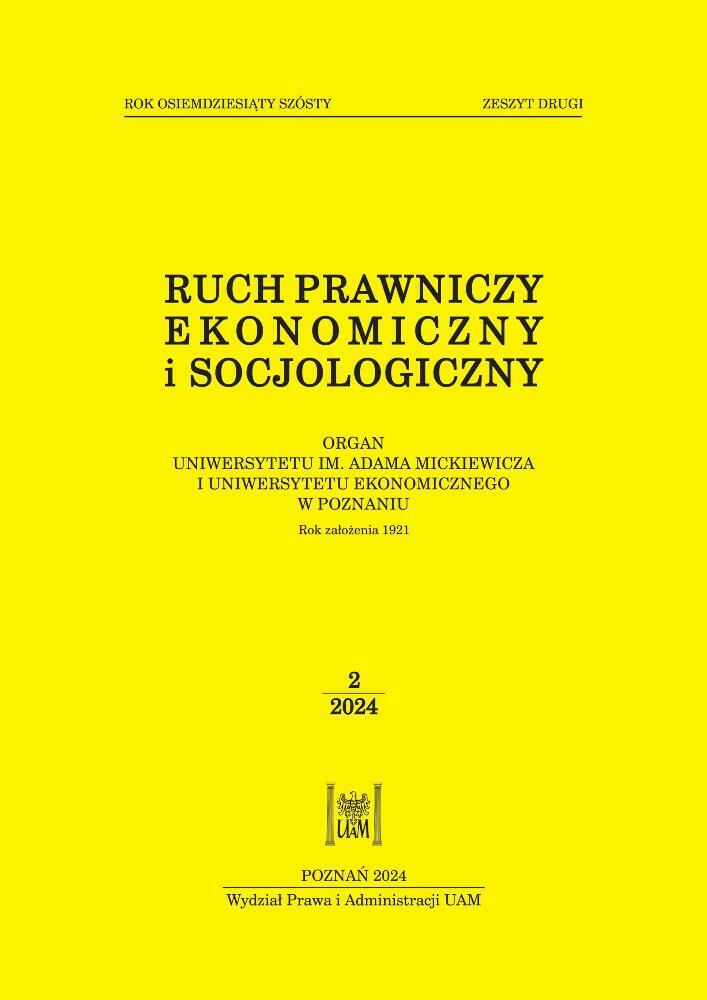Abstract
The creation of equal opportunities in the labour market for people with disability remains a challenge in many countries around the world. The impact of disability, especially when it comes to work opportunities for disabled people, cannot be properly understood without access to the relevant statistics. Information about working-age disabled people is crucial in the development of labour market policy. Such information should be available not only at the national level but also at lower levels of spatial aggregation. The main aim of this article is to propose a way of producing reliable estimates of key labour market indicators (economic activity rate, employment rate and unemployment rate) for working-age disabled people in Poland at the province level. The authors apply SPREE estimation and use data from the Labour Force Survey 2011–2019 (LFS) and the 2011 Census to produce estimates characterized by better precision and stability over time than what can be achieved by applying direct estimation. While the scale of changes in the labour market situation of working-age disabled people was found to be similar to trends observed in the whole working-age population, there are differences in spatial patterns associated with these two groups.
Funding
National Science Centre (Poland) agreement no. DEC-2013/11/B/HS4/01472
Minister of Science under the ‘Regional Initiative for Excellence’ Programme
References
Calegari, E., Fabrizi, E., & Mussida, C. (2022). Disability and work intensity in Italian households. Review of Economics of the Household, 20(2), 533–552. DOI: https://doi.org/10.1007/s11150-021-09559-6
Cocks, E., Thoresen, S., & Lee, E. A. L. (2015). Pathways to employment and quality of life for apprenticeship and traineeship graduates with disabilities. International Journal of Disability, Development and Education, 62(4), 422–437. DOI: https://doi.org/10.1080/1034912X.2015.1025714
European Commission. (2010). The EU disability strategy 2010–2020: A renewed commitment to a barrier-free Europe. Brussels, 15.11.2010. COM(2010) 636 final.
European Commission. (2016). Disability and labour market integration. Publications Office of the European Union.
European Commission. (2021). Union of equality: Strategy for the rights of persons with disabilities 2021–2030. Publications Office of the European Union.
Fabrizi, E., Montanari, G. E., & Ranalli, G. M. (2015). A hierarchical latent class model for predicting disability small area counts from survey data. Journal of the Royal Statistical Society Series A: Statistics in Society, 179(1), 103–131. DOI: https://doi.org/10.1111/rssa.12112
Gołata, E., & Dehnel, G. (2021). Credibility of disability estimates from the 2011 population census in Poland. Statistics in Transition new series, 22(2), 41–65. DOI: https://doi.org/10.21307/stattrans-2021-016
Hanga, K., DiNitto, D. M., & Wilken, J. P. (2015). Promoting employment among people with disability: Challenges and solutions. Social Work and Social Sciences Review, 18(1), 31–51. DOI: https://doi.org/10.1921/swssr.v18i1.847
Jiang, J., & Lahiri, P. (2001). Empirical best prediction for small area inference with binary data. Annals of the Institute of Statistical Mathematics, 53, 217–243. DOI: https://doi.org/10.1023/A:1012410420337
Jiang, J., & Lahiri, P. (2006). Estimation of finite population domain means: A model-assisted empirical best prediction. Journal of the American Statistical Association, 101, 301–311. http://www.jstor.org/stable/30047458 DOI: https://doi.org/10.1198/016214505000000790
Jones, M. K. (2008). Disability and the labour market: A review of the empirical evidence. Journal of Economic Studies, 35(5), 405–424. DOI: https://doi.org/10.1108/01443580810903554
Józefowski, T., & Szymkowiak, M. (2013). Zastosowanie estymatora typu SPREE w szacowaniu liczby osób bezrobotnych w przekroju podregionów [Using a spree estimator to estimate the number of unemployed people across subregions]. Studia Oeconomica Posnaniensia, 1(10), 120–136.
Kim, J., & Rao, J. N. K. (2012). Combining data from two independent surveys: A model-assisted approach. Biometrika, 99, 85–100. DOI: https://doi.org/10.1093/biomet/asr063
Klimanek, T., Szymkowiak, M., & Józefowski, T. (2018). Badanie zjawiska niepełnosprawności w przekroju powiatów województwa wielkopolskiego z wykorzystaniem metod statystyki małych obszarów [A study of disability across districts of the Province of Wielkopolska using small area estimation methods]. Przegląd Statystyczny, 65(4), 449–472. DOI: https://doi.org/10.5604/01.3001.0014.0604
Lo, V. I. (2012). Promotion of the employment of persons with disabilities in Japan, the United States, and China: Carrot, stick, or both. Arizona Journal of International & Comparative Law, 29(3), 557–602. http://arizonajournal.org/wp-content/uploads/2015/10/Lo_Final_3-20-13.pdf
Maples, J. J. (2017). Improving small area estimates of disability: Combining the American Community survey with the survey of income and program participation. Journal of the Royal Statistical Society Series A: Statistics in Society, 180(4), 1211–1227. DOI: https://doi.org/10.1111/rssa.12310
Mussida, C., & Sciulli, D. (2015). Direct and indirect effects of disability on employment probabilities: A comparative analysis. DISCE – Quaderni del Dipartimento di Scienze Economiche e Sociali dises1507. Università Cattolica del Sacro Cuore, Dipartimenti e Istituti di Scienze Economiche (DISCE).
National Center for Health Statistics. (1968). Synthetic state estimates of disability. PHS Publication, no. 1759. U.S. Government Printing Office.
Peijen, R., & Wilthagen, T. (2022). Labour market reintegration of individuals with a physical and cognitive disability by a company-based work-experience program. International Journal of Disability, Development and Education, 69(5), 1–18. DOI: https://doi.org/10.1080/1034912X.2020.1802648
Rao, J. N. K., & Molina, M. (2015). Small area estimation. Wiley. DOI: https://doi.org/10.1002/9781118735855
Statistics Poland. (2017). Labour force survey in Poland: IV quarter 2016. https://stat.gov.pl/en/topics/labour-market/working-unemployed-economically-inactive-by-lfs/labour-force-surveyin-poland-in-4th-quarter-2016,2,23.html
Statistics Poland. (2022). Labour force survey in Poland: II quarter 2021. https://stat.gov.pl/en/topics/labour-market/working-unemployed-economically-inactive-by-lfs/labour-force-surveyin-poland-quarter-22022,2,46.html
Szymkowiak, M. (2019). Podejście kalibracyjne w badaniach społeczno-ekonomicznych [The calabration approach in socio-economic surveys]. Wydawnictwo Uniwersytetu Ekonomicznego w Poznaniu. DOI: https://doi.org/10.18559/978-83-66199-89-7
Turcotte, M. (2014). Persons with disabilities and employment. Statistics Canada.
United Nations. (2015a). The Millennium Development Goals Report 2015.
United Nations. (2015b). Transforming our world: The 2030 Agenda for Sustainable Development.
Wittenburg, D., Mann, D. R., & Thompkins, A. (2013). The disability system and programs to promote employment for people with disability. IZA Journal of Labor Policy, 2(1), 1–25. DOI: https://doi.org/10.1186/2193-9004-2-4
World Health Organization. (2016). World Report on Disability.
Xie, H., Barker, L. E., & Rolka, D. B. (2020). Incorporating design weights and historical data into model-based small-area estimation. Journal of Data Science, 18(1), 115–131. https://www.ncbi.nlm.nih.gov/pmc/articles/PMC7182002/ DOI: https://doi.org/10.6339/JDS.202001_18(1).0006
You, J., Datta, G. S., & Maples, J. J. (2014). Modeling disability in small areas: An area-level approach of combining two surveys. Research Report Series, Statistics. Center for Statistical Research & Methodology. https://www.census.gov/library/working-papers/2014/adrm/rrs2014-11.html
License
Copyright (c) 2024 WPiA UAM

This work is licensed under a Creative Commons Attribution 4.0 International License.





